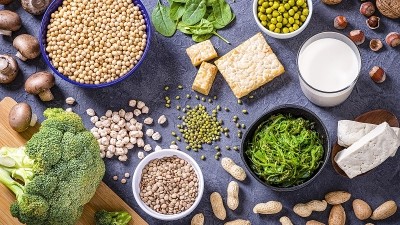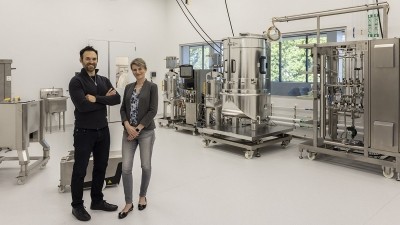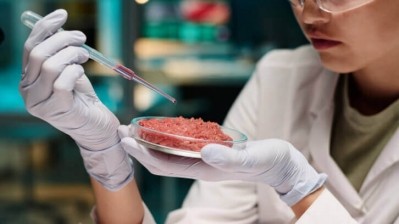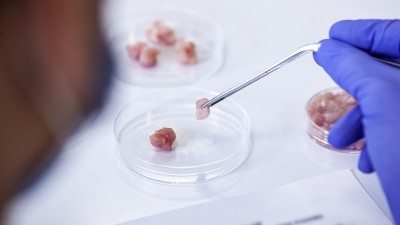From ice age to modern day: Mammoth Meatball maker Vow releases cell-cultivated quail meat
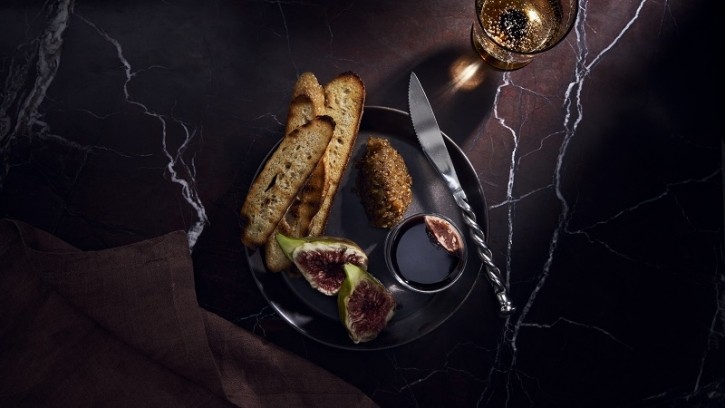
While most alternative meat companies have focused on recreating existing forms of meat like chicken and steak, Vow aims to create one-of-a-kind flavor experiences that delight consumers, Peppou said. Last year, Vow introduced a Mammoth Meatball, which recreated the taste and texture of mammoth meat by modifying a cell line derived from sheep to create mammoth myoglobin — a protein found in striated muscles.
Approved for sale in Singapore, the Forged Parfait is an already-cooked cell-cultivated meat that is delicate and features a rich, umami flavor that can be combined in various dishes, according to Vow. The product will be available at the Mandala Club’s MORE in Singapore from April 12-27, 2024, before rolling out to more fine-dining restaurants in the country, as the company seeks approval in the US and other parts of the world, he added.
“We found that in order to create the best first experience, having something that doesn't need to be cooked is a really good way of doing it. And the parfait being light and fluffy, it can be served cold and served warm. It can be served in a charcuterie board. ... It can be served inside various dishes. There's a lot of flexibility, and it's very versatile what flavors you can pair it with, and so that was one that we were consistently getting really good feedback on of being exciting and interesting and very distinctive in the flavors.”
Vow focuses on premium products, but what about the mass consumers?
To create Forged Parfait, Vow food scientists started with a sample of cells from a Japanese quail and isolated the cells that contribute to the taste and texture. Upon studying those cells, Vow found the nutrients and conditions needed to grow them and began producing them in a bioreactor, using sugar, salt, and amino acids. The cells are then separated using a centrifuge, and Vow's chef mixes the cells with other ingredients to create the Forged Parfait, Peppou explained.
Vow was “originally thinking of launching a combination of crocodile and quail,” but ultimately, that prototype was “too intimidating,” for many consumers, he said. After about 30 prototypes, Vow landed on the current formulation of Quailia, which goes into the Forged Parfait.
Initially, the company is focusing on the “premium and luxury end of the market,” where its “limited production capacity and high prices become an asset rather than a detriment,” Peppou said.
Through technological advancements and the normal tech adoption cycle, Vow hopes that cell-cultivated meat will become more accessible over time, Peppou explained. However, widespread availability of cell-cultivated products might be “10-plus years down the road” as the industry continues to address scalability challenges, he added.
“If you look at the development of any industry, which has some technological innovation, the time from market introduction to mainstream tends to be 10 to 30 years. In fact, you can look at it from telephones, processed foods, and refrigerators; there is a pretty consistent technology adoption that looks like that. And if we look very recently at things like solar panels, electric cars, and smartphones, you see a very similar pattern. To believe that [cell-cultivated meat] was going to be an exception, as a very capital-intensive industry with really huge technical hurdles to overcome, at the very least feels naive.”
A multi-pronged approach to seeking regulatory approval
Vow took a multi-prong approach in seeking regulatory approval for its cell-cultivated meat, applying for approval in Singapore, Australia, and the US at roughly the same time, Peppou said.
"The FDA has been slower than a lot of companies would like, and [there is] a sense of changing requirements. At various times, I almost imagined it a bit like a race — which one is going to get to the finish line first. And at various times, I thought each of those markets would be the first. So, that decision to run all three in parallel led to a lot of anxiety and a lot of stress for trying to harmonize our quality system across three different jurisdictions' requirements but also gave us a lot of optionality."
Currently, “the Australian application timeline is public on the Food Standards website,” and Vow had the first public comment period in January, with the second slated for May, he said. Vow is also working on approval in the US and Europe, but does not have a definite timeline, he added.
‘We have reached that same milestone, and ... we are producing more’
Over the last several years, alternative protein companies faced numerous headwinds, as venture capital funds dried up and brands struggled to commercialize their products. Cell-cultivated meat company New Age Eats shuttered its doors in 2023, and UPSIDE Foods paused plans for large-scale facility in Illinois.
Despite these challenges, Vow claims to have a "commercial story in the market today" and has "delivered on that for a very small amount of capital," Peppou said. This is in contrast to several of the other cell-cultivated players on the market, he noted.
“I am actually feeling quite competent at the moment, and there are a few reasons for that. One, we have just executed really well. We have raised $56m in total, and we are the third company in the world to be able to sell a cultured-meat product. The other two, [Eat] Just has raised ... $850m-plus — seems to be about the ballpark — and Upside, which has raised $600m. So, for less than 10% of the capital raise, we have reached that same milestone, and based on everything we are seeing and hearing, we are producing more than those companies.”
Looking ahead, the company has "runway well into late 2025" and is confident that it can generate cash flow in 2024, without the need of scaling up its production, he added.
“The price point that we are selling at is substantially higher, which even though our unit economics look quite a bit lower than those companies based on what is publicly available, we are selling for a much higher price point. So, we have a credible business model that can actually deliver cash flow now, as opposed to requiring $1bn to hit that scale and do the R&D to make that a viable business.”
